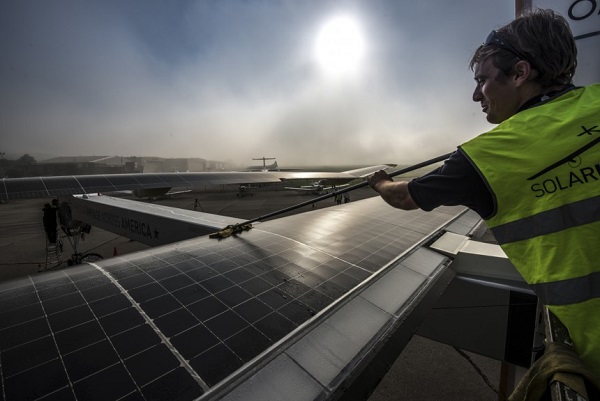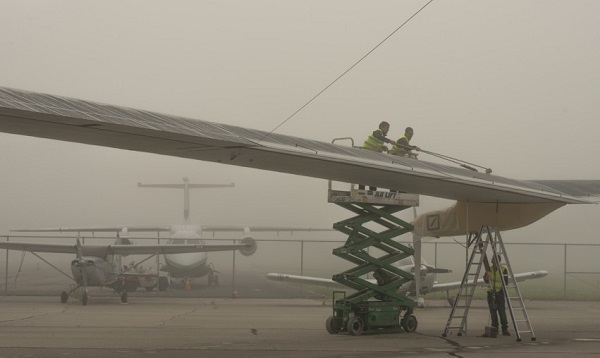Solar Impulse has made it across the continent. The revolutionary solar airplane still has one more stop on its 2013 U.S. trip – up to New York City in a few weeks – but early Sunday morning it landed in Washington, D.C., after an unprecedented two-day, two-pilot trip from St. Louis that included a hop through Cincinnati.
Washington area residents interested in seeing the Solar Impulse plane will have an opportunity Sunday afternoon as the Switzerland-based project holds an open house between 1 p.m. and 5 p.m. EDT at the Smithsonian National Air and Space Museum’s Steven F. Udvar-Hazy Center.

This was the first two-day leg for the plane. Its solar panels and batteries can handle longer flights under the right conditions, but the tight, one-man cockpit, which requires the pilot to sit the entire ride, means 24 hours is the cutoff. So André Borschberg piloted the plane from St. Louis to Cincinnati on Friday before giving way to Betrand Piccard on Saturday.
All went well on the way to Queen City, but there was bit of tension in getting out of town. The plane had sat overnight Friday into Saturday exposed to the elements, and thick fog left a layer of condensation on the solar panels arrayed along the 208-foot wingspan. This delayed the takeoff to Washington as crews used cloths to wipe away and pipettes to draw off the moisture.

In the end, the delay was a good thing, as it pushed the plane’s arrival to D.C. later into the night – advantageous because the slow-moving plane, which requires a crew on the runway to help guide it to a complete stop, can only land at major airports like Dulles after regular commercial aircraft are done for the day.
Piccard landed the plane, called HB-SIA, on runway 19L at Dulles at 12:15 a.m. EDT Sunday morning, marking his last flight in that cockpit, according to the team. Borschberg will fly the final leg of the U.S. trip to New York, and the next big mission for Solar Impulse – around the world in 2015, if all goes as planned– will be done in a new plane, HB-SIB, with a more spacious cockpit to allow for lengthier flights.